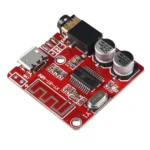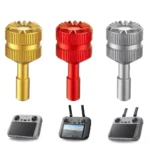Understanding the Differences Between Cash on Delivery and Prepaid Payment Methods

Overview of Cash on Delivery (COD)
Cash on Delivery (COD) is a widely popular payment method where buyers pay for their orders at the time of delivery instead of paying upfront. This payment method has garnered significant traction among consumers, primarily due to the perceived safety and convenience it offers. Unlike prepaid methods, which necessitate payment during the ordering process, COD allows customers to examine their purchases before completing the transaction.
The COD process begins when a consumer places an order through an e-commerce platform, selecting Cash on Delivery as the preferred payment option. Once the order is confirmed, the seller prepares the package for shipment. Upon arrival at the customer’s address, the delivery personnel present the order for inspection. If satisfied, the customer pays the delivery agent using cash or, in some cases, other accepted forms of payment like credit or debit cards. This step ensures that the customer is content with the product before parting with their money.
One of the primary reasons for COD’s popularity is that it caters to a broad demographic, including those who may not have access to online payment methods such as credit cards, debit cards, or digital wallets. This inclusivity is particularly significant in regions with low banking penetration or where consumers exhibit a preference for cash transactions. Additionally, COD mitigates the risk of online fraud, as payment is only made after the product is in hand, providing a sense of security for the buyer.
Furthermore, the convenience offered by Cash on Delivery cannot be overstated. Customers who are skeptical about the quality or authenticity of online purchases often favor COD. By enabling them to verify the product upon delivery, COD enhances customer satisfaction and trust, making it a preferred choice for many. In essence, COD bridges the gap between traditional shopping experiences and modern e-commerce, ensuring a seamless and reassuring transaction process for consumers.
Risks and Scams Associated with Cash on Delivery
The Cash on Delivery (COD) payment method, while convenient for many, is not without its risks and potential scams. One of the most prevalent scams involves fake deliveries. Scammers often deceive consumers by delivering counterfeit or low-quality products that differ significantly from what was advertised. In some cases, individuals receive empty packages or items that were never ordered, exploiting the lack of an upfront payment.
Package tampering is another common issue associated with COD. Unscrupulous individuals intercept legitimate orders, tamper with the contents, or replace them with inferior goods. This not only causes financial losses for consumers but also damages the reputation of businesses. Fraudulent orders further complicate the scenario, where scammers place orders with the intention of not accepting them upon delivery. This practice leads to higher return rates, increased logistical costs, and inventory management nightmares for businesses.
Real-life examples of COD scams are abundant. For instance, a popular electronics retailer faced numerous issues where customers reported receiving bricks instead of expensive gadgets. Similarly, a clothing brand experienced massive inventory losses due to a surge in fraudulent orders that were never accepted at the point of delivery. These incidents highlight the vulnerabilities inherent in the COD system.
Businesses and consumers can adopt several measures to mitigate these risks. For consumers, verifying the credibility of the seller and checking for reviews before opting for COD can be effective. Businesses, on the other hand, can implement stringent verification processes and use tamper-evident packaging to ensure the integrity of their deliveries. Additionally, offering incentives for prepaid orders can help in shifting consumer preference towards more secure payment methods.
By understanding and addressing these risks, both consumers and businesses can better navigate the challenges associated with Cash on Delivery, ensuring a safer and more reliable transaction process.
Prepaid Payment Methods and Payment Gateways
Prepaid payment methods encompass a range of options including credit and debit cards, net banking, and digital wallets. These methods require the customer to pay at the point of purchase, either through entering card details, logging into a bank account, or utilizing a digital wallet service. This type of transaction is facilitated through payment gateways, which act as intermediaries between merchants and financial institutions, ensuring the seamless transfer of payment information.
Payment gateways play a crucial role in the ecosystem of prepaid payment methods. They encrypt sensitive information such as credit card details, thereby securing the transaction process. This not only safeguards the consumer’s financial data but also protects merchants from potential fraudulent activities. By verifying the authenticity of transactions, payment gateways help in maintaining the integrity and trustworthiness of online payment systems.
In India, businesses offering prepaid payment methods must comply with stringent regulatory requirements and compliance checks mandated by the Reserve Bank of India (RBI). The RBI’s guidelines include robust Know Your Customer (KYC) norms, anti-money laundering measures, and the implementation of secure encryption techniques. These regulations aim to fortify the overall security framework, thereby enhancing consumer confidence in using prepaid payment methods.
Security measures associated with prepaid payments are comprehensive. They include multi-factor authentication, secure socket layer (SSL) encryption, and regular audits to identify and mitigate potential vulnerabilities. In addition, consumer protection mechanisms such as chargeback policies and dispute resolution processes are in place to address any grievances promptly.
Prepaid payment methods offer a high level of reliability for both customers and merchants. For consumers, the assurance of secure transactions and the convenience of immediate payment make it a preferred choice. For merchants, the reduced risk of payment defaults and the streamlined cash flow management contribute to the overall efficiency of business operations. Thus, prepaid payment methods, supported by secure payment gateways, stand out as a dependable and secure option in the digital payment landscape.
Comparing COD and Prepaid Payment Methods
When choosing between Cash on Delivery (COD) and prepaid payment methods, both consumers and businesses must weigh several factors to determine the best fit for their needs. Each payment method offers unique advantages and potential drawbacks that can significantly impact the purchasing experience and operational efficiency.
From a consumer perspective, Cash on Delivery provides a sense of security and convenience. Consumers can inspect the product before making a payment, which reduces the risk of fraud and enhances trust in the purchasing process. This method is particularly beneficial in regions where online payment infrastructure is not well-developed or where consumers are cautious about sharing their financial information online. However, COD can also be less convenient, as it requires the consumer to have the exact amount of cash on hand at the time of delivery, and it might involve additional fees.
On the other hand, prepaid payment methods, such as credit cards, debit cards, and digital wallets, are often preferred for their ease of use and speed. Prepaid options streamline the transaction process, allowing consumers to complete their purchases quickly and without the need for physical cash. Additionally, many prepaid methods offer rewards, cashback, and other incentives that can enhance the overall shopping experience. However, security concerns and the risk of data breaches can deter some consumers from using these methods, especially if they feel uncertain about the safety of their financial information.
From the perspective of businesses, COD can lead to logistical challenges and higher operational costs. The need to handle cash transactions can slow down the delivery process and increase the risk of theft or loss. Moreover, businesses may face higher return rates with COD orders, as consumers may refuse to accept the product upon delivery. Despite these challenges, offering COD can expand a business’s customer base, particularly in markets where prepaid options are less prevalent.
Conversely, prepaid payment methods can improve cash flow and reduce the administrative burden associated with managing cash transactions. They also provide immediate payment confirmation, which can expedite order processing and delivery. However, businesses must invest in secure payment gateways and systems to protect consumer data, which can incur additional costs.
Studies have shown varying preferences for payment methods based on demographic factors and regional differences. For example, according to a 2020 report by Statista, approximately 58% of online shoppers in India preferred COD, while only 20% opted for prepaid methods. In contrast, in the United States, prepaid payment methods dominate, with over 80% of transactions completed via credit or debit cards.
In conclusion, the choice between Cash on Delivery and prepaid payment methods largely depends on the specific needs and preferences of consumers and businesses. COD is suitable for markets with limited online payment infrastructure or where consumer trust in digital transactions is low. Prepaid methods are ideal for regions with advanced payment systems and consumers who prioritize convenience and speed. Both methods have their place in the modern e-commerce landscape and can coexist to cater to diverse customer preferences.

 Headlights
Headlights Internal & External Lights
Internal & External Lights Auto Parts
Auto Parts Accessories
Accessories Connectors & Tools
Connectors & Tools
 Electronics
Electronics
 Drone Accessories
Drone Accessories Drone Parts
Drone Parts